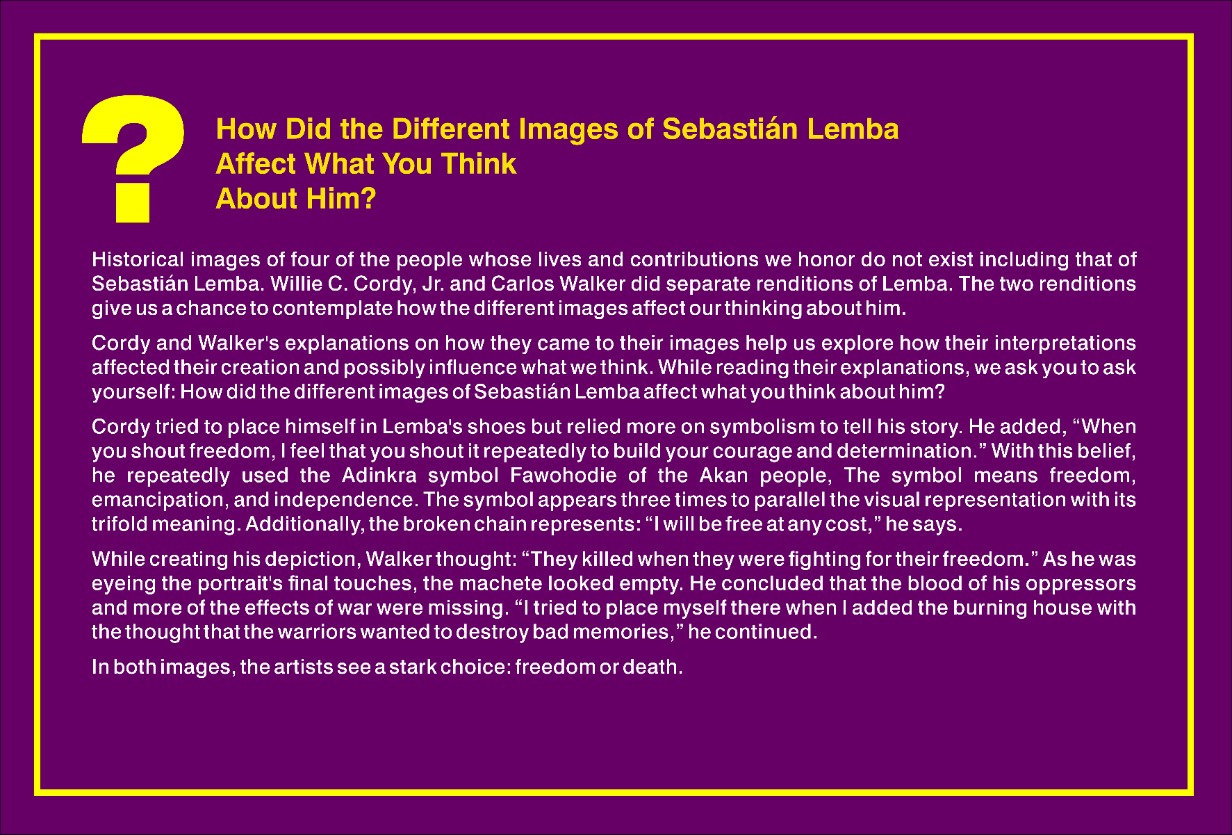How Did the Different Images of Sebastián Lemba Affect What You Think About Him?
Historical images of four of the people whose lives and contributions we honor don’t exist including that of Sebastián Lemba. Willie C. Cordy, Jr. and Carlos Walker did separate renditions of Lemba. The two renditions give us a chance to contemplate how the different images affect our thinking about him and other people.
Cordy and Walker's explanations on how they came to their images help us explore how their interpretations affected their creation and possibly what we think. However, while reading their explanations, we ask you to ask yourself: How did the different images of Sebastián Lemba affect what you think about him?
Cordy tried to place himself in Lemba’s shoes, but relied more on symbolism to tell his story. He added, “When you shout freedom, I feel that you shout it repeatedly to build your courage and determination.” With this belief, he used the Adinkra symbol “Fawohodie,” of the Akan people, repeatedly. The symbol means freedom, emancipation, and independence. The symbol appears three times to parallel the visual representation with its trifold meaning. Additionally, the broken chain represents “I will be free at any cost,” he says.
While creating his depiction, Walker thought: “They killed when they were fighting for their freedom.” As he was eyeing the portrait’s final touches, the machete looked empty. He concluded that blood of his oppressors and more affects of war were missing. “I tried to place myself there when I added the burning house with the thought that the warriors wanted to destroy bad memories,” he continued.
In both images, the artists see a stark choice: freedom or death.
Plus Three Questions and Answers
-
How old was Benedita da Silva, Brazil’s first female senator, and first woman and Black governor when she received her high-school diploma and attended college at the same time as her then 20-year-old daughter?
- In 1931, two years after the Great Depression had started, John C. Robison co-founded Robbins Airport, America’s first Black airport. Robinson is often considered the "Father of the Tuskegee Airmen” and the father of what African airline?
- Claudia Jones (Cumberbatch) as a Communist Party USA organizer, leader, editor, theoretician, and journalist, adopted the surname “Jones” as self-protective disinformation. She is buried next to Karl Marx in Highgate Cemetery in North London. Is she buried to his left or to his right?
The answers are below the image.


Answers:
- Benedita da Silva was 40-years-old when she received her high-school diploma.
- John C. Robinson is considered the father of Ethiopian Airlines.
- Claudia Vera Jones (Cumberbatch) is buried to the left of Karl Marx.







